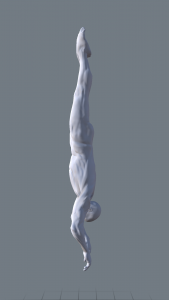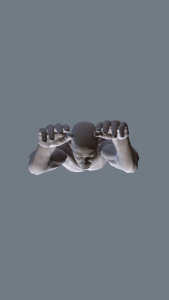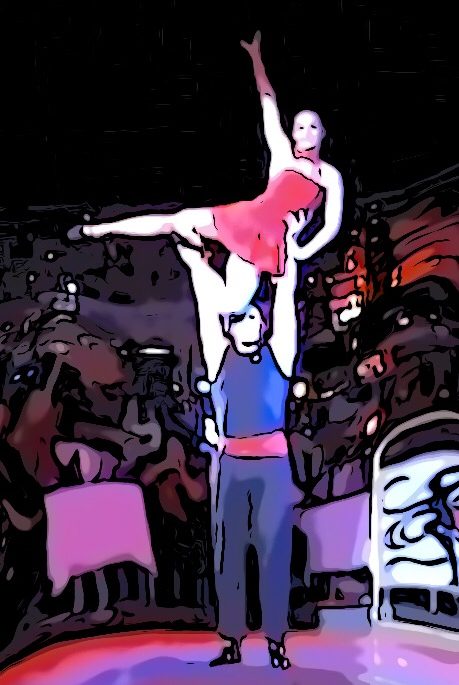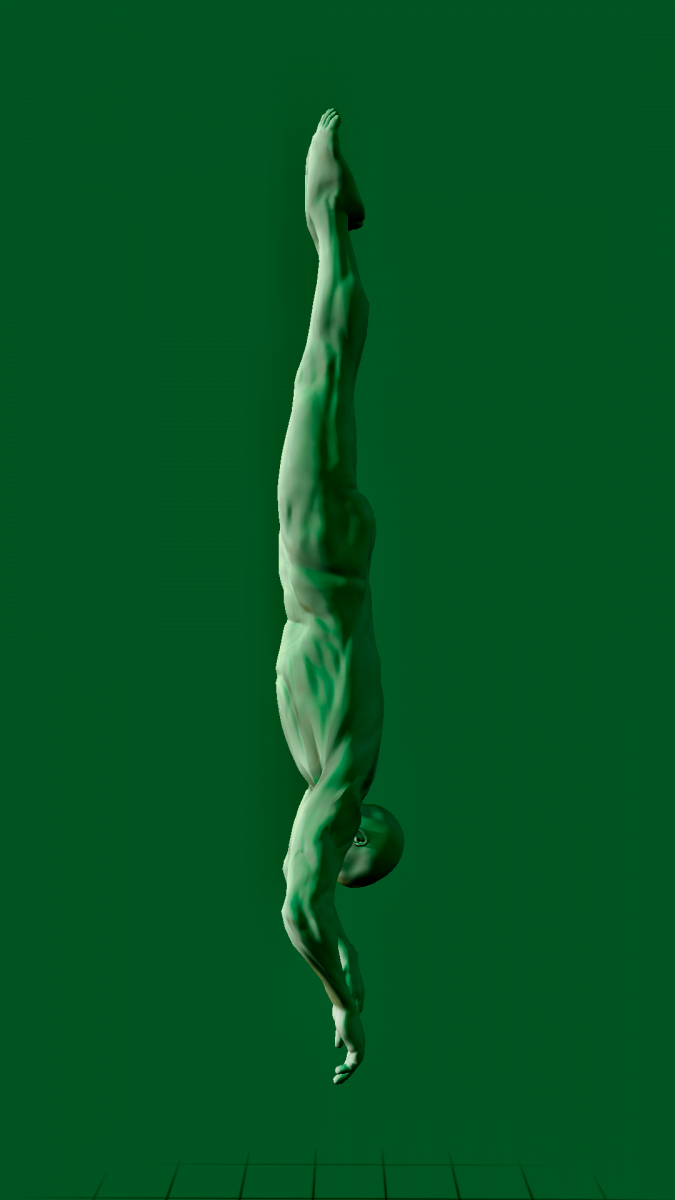The base can balance the flyer only with stable (fixed) shoulders. To balance the flyer, the base creates at the shoulder of the flyer the necessary shear forces, without these should get changed.
For the flyer this means:
Position 1: either pulling the shoulders in the direction of the hip …


Position 2: or pulling towards his ears …


Common to both variants is that the center of gravity of the flyer remains exactly above the shoulder. Mostly, the flyer supports himself with its hands on the forearms of the base to stabilize himself. However, this must not cause him to start balancing. He is just ajar …
A usual trick starts from the ajar upper arm stand into the ajar shoulder stand (position 1) and from there further into the shoulder stand with shoulders on the ear (position 2). The flyer is tilted further and further from the base until the force line runs vertically through it. From this last position, the base can also take the flyer onto one arm. The one-armed shoulder stand is very easy compared to the one-armed handstand and still looks very spectacular.
Unfortunately, the flyer often unconsciously corrects (analogously to standing). Small changes in the shoulder change the pressure at the contact point by a few centimeters, causing the center of gravity to move out of the palm. Some bases try to counteract this by keeping the flyer more leaned on. Unfortunately, this does not change the unstable shoulder. It just makes the flyer more predictable in its misconduct, as he probably does not make any corrections in the direction of his tilting over.
Deutsch

